|
Daizen-ji |
| TEL |
0553-44-0027 |
including 2 meals 5700 yen.
|
| Access |
"JR Katsunuma Budokyo station" > 5 minutes car |
| Parking |
There is a parking lot |
| Room |
max 80 people |

Daizenji Temple introduced grapes to Katsunuma for the first time; Katsunuma is now a grape production site. Yakushi-Nyorai or the Medicinal Buddha, which is the principal image, has a bunch of grapes in his hand, which is quite rare. Grape fields spread before you and they produce original Daizen-ji Temple wine. You can have this wine at the shukubo.
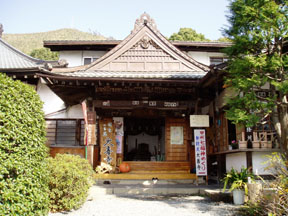 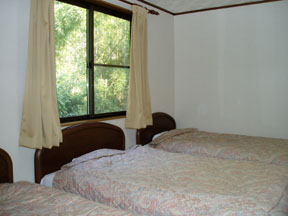
I stayed at the new shukubo building. The room was western style, with a washbasin and a lavatory. It was a clean and comfortable room equipped with a TV set and air conditioning. (There are also Japanese style rooms.) Along the corridor toward the guest room at the shukubo, there was a Japanese garden built in the Edo period, which heals your mind. There were displays of a standing notice board made by the order of Nobunaga Oda and weapons used during the civil war period.
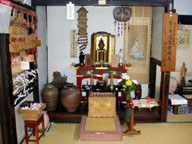 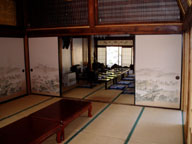 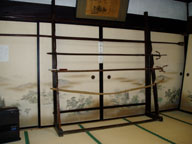
When you pass the parking lot from the shukubo, there is a gateway to the temple. When you climb the stairs, you will find the main hall (Yakushido), a national treasure. This hall is a typical main hall of esoteric Buddhism that represents the Kamakura period (1185 to 1333). It is a beautiful building with a thatched roof rolling back at the end, making gentle curves. I visited there when the leaves of the trees, which had turned red and yellow, were the most beautiful. The mountains behind the temple were also reddish, with a lonely kite flying in the sky. I enjoyed the peaceful autumn taste in front of the beautiful architecture.
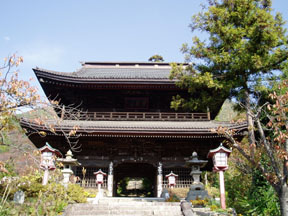 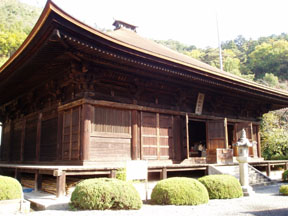
In the main hall, you are able to see precious images of Buddha, including Nikko/Gekko Bosatsu and the 12 guardians of Buddha. One of the 12 guardians, General Indara, has a fearful expression with twisted lips revealing his teeth. "It may be the work of a very talented sculptor with a stroke of genius," a shukubo staff member told me.
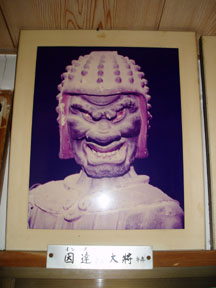 In this hall, I received zazen instruction from a little past nine in the morning. Here you do not use a cushion for zazen; you sit for about half an hour with your right leg placed on your left thigh, which is a semi-lotus position. They instructed me on four key points: (1) Sit with your back straight, (2) keep your eyes half open. See in front of you using one-third of your sight and see your mind using two-thirds of your sight. (3) Place your joined hands in front of your navel. Keep both thumbs not too close and not too far away and (4) take deep, slow breaths. Breathe alternately from your nose and mouth, seven to eight times each. (Breathe seven to eight times from the nose first and then breathe from the mouth for the same number of times.) Repeat this cycle alternately.
In this hall, I received zazen instruction from a little past nine in the morning. Here you do not use a cushion for zazen; you sit for about half an hour with your right leg placed on your left thigh, which is a semi-lotus position. They instructed me on four key points: (1) Sit with your back straight, (2) keep your eyes half open. See in front of you using one-third of your sight and see your mind using two-thirds of your sight. (3) Place your joined hands in front of your navel. Keep both thumbs not too close and not too far away and (4) take deep, slow breaths. Breathe alternately from your nose and mouth, seven to eight times each. (Breathe seven to eight times from the nose first and then breathe from the mouth for the same number of times.) Repeat this cycle alternately.
To be honest, it was difficult to exactly follow these instructions. My breathing was all over the place. However, the priest was busy chanting sutra and dealing with the visitors to the hall for sightseeing and only sometimes came back and straightened my back. So I did not have to be very nervous. As clumsy as my zazen was, I felt refreshed after I completed it. What was best of all was that I was able to practice zazen in a national treasure, which made me happy.
The food served at the shukubo was home cooking using local specialties. Sukiyaki, tempura, potatoes, grapes, etc. They were all abundant and really tasty. (You can choose shojin vegetarian dishes if you wish.) Of course I tasted the wine made in Daizen-ji temple. It was a light and fruity casual wine. The people working at the lodge were cheerful and nice. This shukubo is recommended for people who wish to have a quiet and leisurely time.
|
Please confirm the latest information at the time of lodging.
|
|

